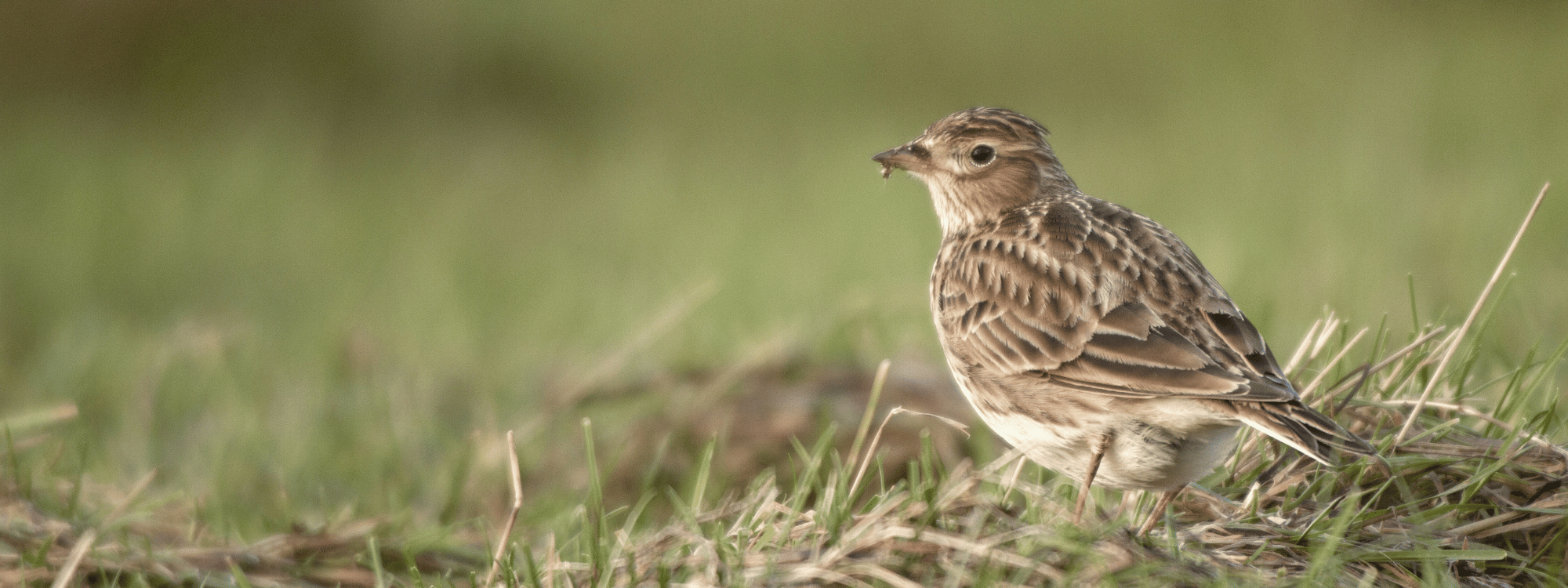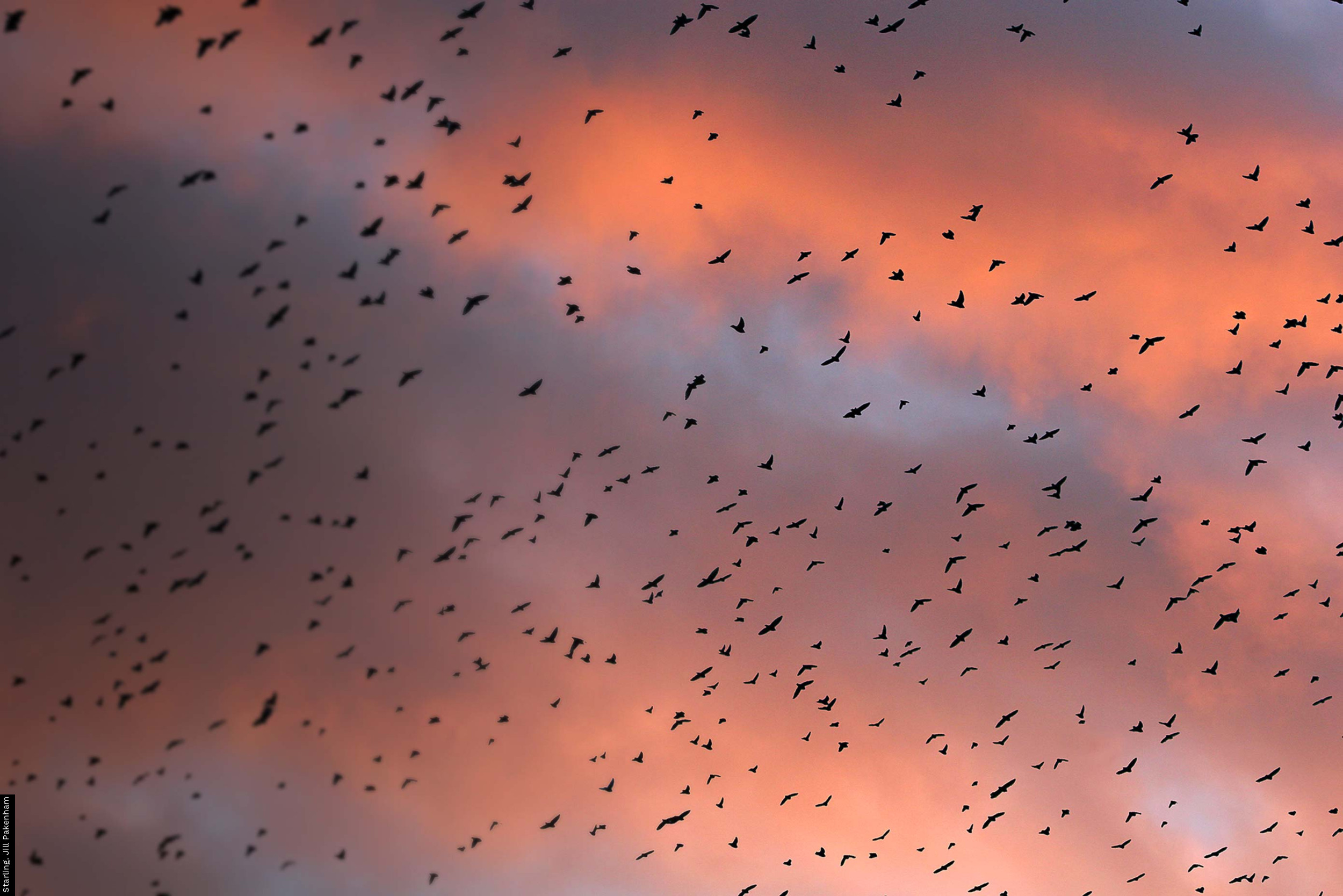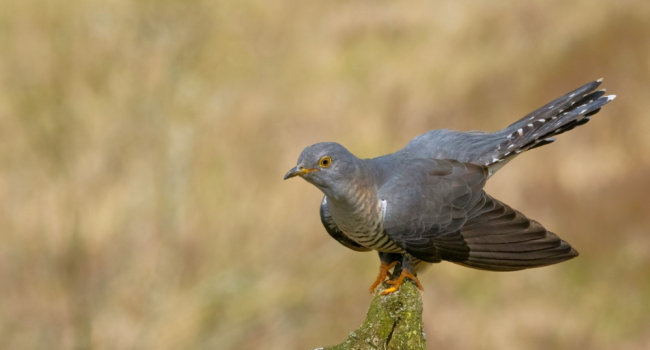
Farmland Bird Appeal
Please note that this appeal is now closed to donations. If you’d like to support our work, you can donate to a current appeal >
Summary
- Funds from the Farmland Bird Appeal supported many of our farmland bird research projects, including several which evaluated the impacts of agri-environment schemes on farmland bird populations.
- We investigated the effectiveness of the Environmental Stewardship (England) and Tir Gofal (Wales) schemes, publishing our findings in scientific journals.
- Our research has also produced insight into the scale of agri-environment scheme implementation needed to benefit mobile biodiversity such as birds and small mammals.
Why we launched the Farmland Bird Appeal
In 2015, a poll of BTO supporters identified farmland birds as their top topic of concern. We launched the Farmland Bird Appeal in the same year to support our ongoing programme of research on farmland birds, including the effects of agri-environment scheme (AES) management on farmland bird population trends.
Farmland bird research projects
Deeping Fen Survey Analysis
Support for the Farmland Appeal allowed us to analyse and interpret long-term results from a key area of fenland farmland, building on bird survey work conducted by a local volunteer. The results show the specific effects of crop management in the area concerned.
Sparrowhawks and Wild Bird Seed Mix crops
Analysis of agri-environment scheme effects on BTO/JNCC/RSPB Breeding Bird Survey trends for farmland birds has suggested that the benefits of wild bird seed mix, an agri-environment scheme management option that provides critical food resources for seed-eating birds, have decreased over time. One possible explanation is that predators have learned to use the wild bird seed mix habitat as a source of food themselves, potentially making it an ‘ecological trap’ that has more negative than positive effects for farmland passerines.
We aimed to investigate this by satellite-tracking Sparrowhawks and learning more about how these predators use wild bird seed mix habitats. Of course, tracking first requires birds to be caught and, while Sparrowhawks are occasionally caught during bird ringing sessions, these events are unpredictable, and it is not possible to catch them ‘to order’. An additional complication arose as a result of the data download system of the tags available, which required birds to be close to Bluetooth antennae.
We did successfully tag two birds for this project, one in a farmland area in West Norfolk and one in a suburban/farmland fringe in Thetford. Unfortunately, only the latter bird was sufficiently predictable in habits for successful data download. We therefore completed this work as a feasibility study, with the conclusion that a more advanced tag design with a more reliable data download system would be needed to make extension of such a project feasible.
Nevertheless, the single bird that did yield useful data showed some interesting patterns of habitat use around gardens with feeders and key parts of peri-urban farmland, such as game cover crops.
- Read more about these findings in a BTO News article by Senior Research Ecologist Ian Henderson >
Effects of Environmental Stewardship on Farmland Birds
Environmental Stewardship was the main national agri-environment scheme in England between 2005 and 2016. One of its aims was to benefit national-scale bird populations; with the data from the similarly national-scale BTO/JNCC/RSPB Breeding Bird Survey at our fingertips, we were ideally placed to evaluate the effectiveness of the scheme.
Thanks to funding from Natural England we have conducted several analyses of the Breeding Bird Survey data using state-of-the-art statistical models. Funds from the Farmland Bird Appeal allowed us to draft a more accessible output with a more complete assessment of impacts on the farmland bird community.
Preliminary results suggest that Environmental Stewardship management to enhance winter seed availability for farmland birds has significantly reduced the rate of population decline for several species, including Yellowhammer, Linnet, Reed Bunting and Grey Partridge.
We are now working on an update of these results which incorporates the most recent Breeding Bird Survey data, but the the approach we have used and the initial results have been published in this paper:
Baker, D. J., Freeman, S. N., Grice, P. V., & Siriwardena, G. M. 2012. Landscape-scale responses of birds to agri-environment management: A test of the English Environmental Stewardship scheme. Journal of Applied Ecology 49(4): 871–882
Effects of the Welsh AES Tir Gofal on bird population trends
Tir Gofal was the Welsh equivalent of Higher-Level Environmental Stewardship, the main agri-environment scheme in England between 2005 and 2016. Tir Gofal ran from 1999 to 2011 and, as with Environmental Stewardship, one of the scheme’s aims was to benefit bird populations.
With funding support from the Welsh government, we were able to test the effects of Tir Gofal on bird population trends. We used the same methods as for the analysis of Environmental Stewardship impacts, but we considered a wider range of habitats – Tir Gofal covered land-uses like woodland and heathland as well as farmland.
Our results show that Tir Gofal management of woodland, scrub and arable farmland has had the most positive effects on Welsh birds, while management of other types, such as the grazed pasture that dominates much of the landscape, has been less successful.
Thanks to support for the Farmland Bird Appeal, we were then able to draft a manuscript for a scientific paper about our research which has now been published in Agriculture, Ecosystems & Environment:
Dadam, D., & Siriwardena, G. M. 2019. Agri-environment effects on birds in Wales: Tir Gofal benefited woodland and hedgerow species. Agriculture, Ecosystems & Environment 284: 106587
Effects of agri-environment schemes on farmland habitats in winter
All agri-environment schemes in England have included a range of management options specifically designed to benefit resident and migrant birds, by providing food and habitat resources. However, prior to the Farmland Bird Appeal, there had been no national-scale monitoring of the effectiveness of these interventions.
Thanks to funding from Natural England, we evaluated the effects of agri-environment scheme management on resident and migrant birds as well as Brown Hare during winter. Funds from the Farmland Bird Appeal helped us complete the project and prepare a scientific paper.
Our results show that agri-environment scheme management positively impacted bird counts during winter when applied at the landscape scale (which we defined as a 3 km square surrounding a survey square). However, the effects of agri-environment schemes in 1 km squares were less detectable. Brown Hares showed responses on a similar scale. These results probably reflect the scale at which birds and Brown Hares use the environment – they move around a lot, so smaller areas of agri-environment scheme management have smaller effects.
The positive effects were strongest for stubble and hedgerow management, which probably benefit birds via food supplies – of seeds and berries, respectively.
Management approaches to alleviate predation impacts on farmland bird populations
Predation is regularly cited as an important mechanism of population change in birds, leading to calls for predator control as a conservation solution. However, such an approach would require indefinite predator culling which would be both impractical and controversial.
Habitat management, such as one-off habitat creation events or shifts in ongoing farm management, could restore the balance between predators and prey and avoid a need for expensive, unsustainable culling, if and where predation represents a significant mechanism for population change in farmland bird species. However, the specific types of management that would be successful will vary between prey and predator species, and evidence about predator behaviour in farmland habitats is lacking.
This work, funded by the appeal, reviewed the literature on key predators of farmland birds in Britain: corvids, Sparrowhawk, mustelids, Red Fox, Hedgehog, Badger and others that came to light in the process of our research. We considered the habitat and other influences on predator behavioural and foraging success, and identified the complete breadth of predator diets.
We have produced an early draft literature summary, and are currently working on this project to produce a scientific paper manuscript.

Support more work like this
Our Farmland Bird Appeal is now closed, but you can still support us. Donating to one of our current appeals will help fund our vital work to secure a better future for birds, for nature and for people.






Share this page